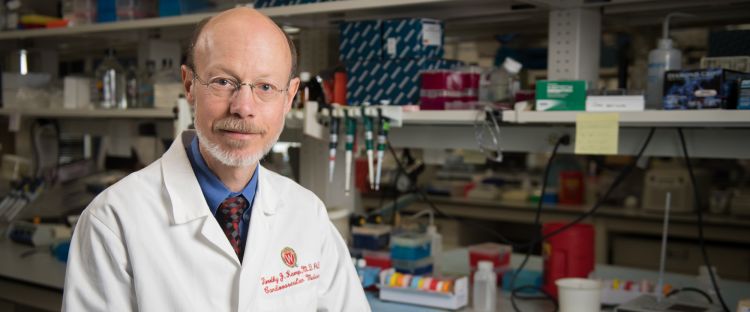A decade later, what is the state of stem cell research?

It has been ten years since researchers at UW-Madison and Kyoto University in Japan announced a breakthrough in stem cell research: the ability to produce induced pluripotent stem cells (iPSCs), a technique that allows reprogramming of human skin cells so that they can be coaxed to become many of the body's cell types.
Timothy Kamp, MD, PhD (pictured above), professor, Cardiovascular Medicine and co-director, UW Stem Cell and Regenerative Medicine Center, was quoted in a story about progress in stem cell research and technology on the 10th anniversary of the announcement that methods for creating iPSCs had been discovered by James Thomson, VMD, PhD, John D. MacArthur Professor and Director of Regenerative Biology, Morgridge Institute for Research and Shinya Yamanaka, MD, PhD, professor, Kyoto University and University of California-San Francisco and J. David Gladstone Institutes.
“People who want a cure for X, Y and Z disease are going to be disappointed with the 10 years of progress,” said Dr. Kamp. “But from a realistic standpoint, I think things have progressed fairly well.”
Dr. Kamp is involved in a multi-institution consortium that has been awarded an $8.6M, seven-year grant from the National Institutes of Health to test 3-dimensional "heart patches" of cardiomyocytes grown from iPSCs in pigs to repair heart tissue damaged by heart attacks. If successful, the study could lead to human trials, but there are significant challenges.
“It’s not like plugging a USB drive into your computer, and it just hooks up fine,” said Dr. Kamp.
Resources:
- "A decade after stem cell feat, research ramps up," Wisconsin State Journal, November 18, 2017
- "Stem cell ‘heart patch’ moves closer to clinic," UW-Madison, September 21, 2016